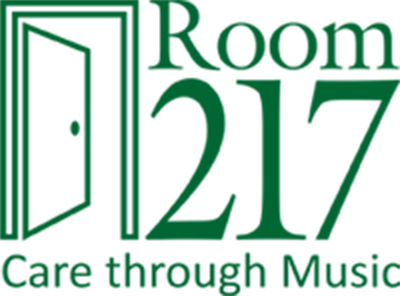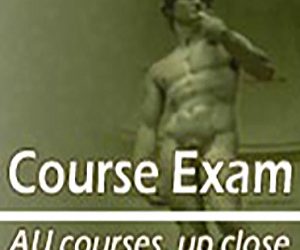 Last November, The Voice Magazine was invited to Room 217 Foundation’s Music Care Conference in Mississauga, Ontario. Unfortunately, I was unable to attend, but intrigued by the subject matter of the conference, I contacted the Revenue Development Coordinator at Room 217, Deb Bartlett.
Last November, The Voice Magazine was invited to Room 217 Foundation’s Music Care Conference in Mississauga, Ontario. Unfortunately, I was unable to attend, but intrigued by the subject matter of the conference, I contacted the Revenue Development Coordinator at Room 217, Deb Bartlett.
In 2014, I took Athabasca University’s course HLST 301: Complementary and Alternative Thera-pies. In that course I learned about Medical Art Therapy and the term ?designer music? which is a ?new genre of music designed to affect the listener in specific ways? (Lippin and Micozzi 173). There is evidence to support the effect that music has on the brain, and specifically ?the connection between music and health is likely to have a mechanism involving a ?neural? hypo-thalamic frontal limbic loop and a neuroendocrine hypothalamic-immunological loop? (Lippin and Micozzi 174). HLST 301 peaked my interest in music therapy and the role that music, and art, can play in health care, health management, and recovery.
So when I heard about Room 217, a not for profit organization that creates music and provides resources for those who wish to use music to help people, I was excited to learn more about the organization and their work.
I got in touch with Deb Bartlett and asked her some questions about Room 217 and the work that they do. Please note that Room 217 does not deal specifically with music therapists (which is a professional practice) and training music therapists. Instead, Room 217 creates resources for use by health care professionals, family caregivers, volunteers, and anyone looking to add music to their health and self-care regime.
What are the aims and goals of your organization?
Deb: Our goal – to care for people through music!
We want to help improve quality of life by producing and delivering music care resources to vulnerable populations. We want to help improve quality of care by training caregivers to inte-grate music into their regular practice. We want to optimize music as a means of care in vari-ous settings through innovative and collaborative research.
What is music care?
Deb: Music care is an approach to caregiving which allows the healing principles of sound and musical effect inform our caring practices. Music care is not a specific practice, but rather a paradigm within which music is inherently understood to be part of life, playing an integral role in all aspects of caregiving and care settings. Music care is intended to be person-centered and improve quality of care, thus contributing to overall culture change in health care.
What are the resources available, and who are they available to?
Deb: It’s quite extensive:
CDs: 12 albums, each of a different type of music (country, Broadway, love songs, spiritual, Celtic, etc.) There are no more than three instruments (including voice) on each track.
DVDs: three, each is the music of one of the CDs with beautiful photos that accompany the mu-sic. Multi-sensory, great for an alternative to TV, waiting rooms, lobbies, LTC rec rooms, etc.
Pathways: our first full program, It’s a singing program that engages people with dementia through song. It’s designed to encourage singing, reminiscence and discussion.
Music Care Certificate Program: a three-level program designed to increase caregiver confi-dence in using music in their caregiving. These are held around the country, wherever there has been an interest in the program. We have trained people to lead the sessions locally. Most sessions are held in Ontario, although we have held several in Calgary (quite an active learning community there), as well as in Fredericton, Charlottetown and one is scheduled in Saint John in May 2016.
Music Care Conference: we’ve just held our eighth national, one-day conference. they’re usual-ly held in the Greater Toronto Area, but there was a Calgary conference in the fall of 2014, and there will be a Fredericton conference June 3, 2016. The conference presents research relating to music and health, as well as sessions that would be pertinent to front line staff. (PDF at-tached of the Nov. 7 conference, to give you an idea of what’s offered). There are also performances and keynote speakers.
Webinars: from September through June, we run a one-hour webinar (3:30-4:30 EST) with a number of hosts on a number of music care topics.
Speakers: both Bev and Sarah Pearson are available as speakers at events, conferences, in-service training, etc.
How do you choose the music to include on the albums available?
Deb: We choose the music through focus groups, surveys, musical experience and intuition.
How do the CDs work? Are they geared towards specific audiences?
Deb: The music is designed for vulnerable populations. The first albums were designed for use in palliative care. Bev (our ED, and founder) watched the effect of music and singing on her father, as he was dying (in Room 217 of Uxbridge Cottage Hospital, hence the name of the Foundation). She is a teacher, and a music teacher specifically, and began looking into music for that population, and finding none, started creating it. That’s how the foundation got its start. The music is slowed to 60 beats per minute (the resting heart rate) and is designed to soothe the listeners by slowing respiration and providing calming music. The CDs are well known to hospice palliative care workers and volunteers, spiritual care providers, LTC staff and other health professionals. The Pathways Singing Program has been in development for four years. It’s designed (the host, the dialogue, the music, the number of times It’s repeated, etc.) specifi-cally for people with dementia. Because music is stored in a different place than words, It’s possible for people who aren’t able to converse fluently to recall music and lyrics. Once the singing starts, some people with dementia will be able to continue verbalizing. The program offers a music making (as opposed to passive music listening) opportunity that is also enjoyable for the caregivers. Many of our beta testers said they learned things about their residents or family members through the program, because of the discussions that took place around the songs and the memories that surfaced. Here’s a link to a sampler of an episode.
My Own Thoughts
What I like most about the availability of Room 217’s resources is that they are available to an-yone through Room 217’s online store or on iTunes. Room 217 also provides music care education to anyone interested in the practical application of music. The list of applications for therapeutic music is extensive and includes:
pain distraction or distraction during treatments
background music ? treatment, surgery, recovery and waiting rooms, passive therapy (Cerebral Palsy)
tinnitus relief
during and enroute to/from chemotherapy treatments
convalescence and rehabilitation
coma stimulation
organ donation transition process
psychotherapy ? to access, reminisce, life review
in burn units, oncology units, neonatal units, cardiac units, critical care units, Alz-heimer?s/dementia care units
rejuvenation of health care professionals i.e. palliative care and ICU nurses
destressing caregivers, Code Lavender (Cleveland Clinic)
chaplains ? visitation gift, quiet rooms, during services
calming agitation – asthma attacks, primary students Alzheimer’s, Acquired Brain Injury
exercise instruction, yoga, pilates, stretching
support with Parkinson’s, Alzheimer’s, ALS, Acquired Brain Injury, Coma
grief and bereavement
pet companionship and pet bereavement
meditation, contemplation
spiritual support, worship
On a more personal note, I recently had a minor surgery before Christmas, and I noticed that while I was sitting on the table, waiting for the anesthesiologist to finish their preparations in the operating room, there was music playing softly in the background. I appreciated the dis-traction from my nervous tension, and I immediately felt relaxed while I allowed myself to focus on the music instead of the preparations going on around me. I believe that having music playing made a huge difference in easing my tension before and after the surgery.
So if you are a health care worker or simply looking for music resources to use for home or personal use, then I highly recommend checking out Room 217.
References
Lippin, RIchard A., and Marc S. Micozzi. ?The Arts in Medicine.? Fundamentals of Com-plementary and Alternative Medicine. 4th ed. Ed. Marc S. Micozzi. Missouri: Saunders, Else-vier, Inc., 2011. 163-176. Print.
Samantha Stevens is an aspiring writer who loves combining her love for literature with photography, painting, music, and all creative pursuits.

